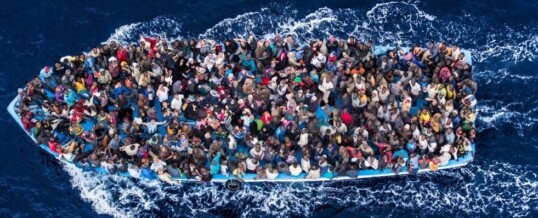
McLeod Group blog by Hunter McGill, Sept. 23, 2016
The week of September 19 occasioned the usual cluster of high-level meetings in New York, as the United Nations begins its autumn sessions. Of particular importance for the international community of humanitarian organizations were the United Nations Summit for Refugees and Migrants and the Leaders’ Summit on Refugees, hosted by President Barack Obama and co-hosted by Canada, among other countries. Both events were marked by hand-wringing, reminders of how many refugees, internally displaced persons and migrants there are in the world, and of the desperate conditions they are living in.
There is no question that the world has a major crisis on its hands. In 2015 an estimated 65 million people were forced to leave their homes because of violence and persecution. But while many people want to help, most governments are concentrating their efforts on deterrence, restricting access to refuge and safety and, in some cases, sending refugees and migrants back to the danger and deprivation they fled.
It’s worth noting that in a new report, Europe’s refugees and migrants: Hidden flows, tightened borders and spiralling costs, the Overseas Development Institute in London estimates that European countries spent 17 billion Euros between 2014-2017 to reduce refugee and migrant movements. The result seems to have been a shift from overt to covert, hidden and dangerous means to enter Europe, not a drop in numbers.
Will the UN meetings bring about any change and improvement in the current situation, especially for refugees? What can we expect from the high-level palaver and what role can Canada play?
Well, if the outcomes of the World Humanitarian Summit in May in Istanbul are any guide, our expectations should be kept in check. Despite the efforts of the organizers, with particular emphasis on burden-sharing and children, the results of the meetings are general and lacking in specific targets, despite the aim of agreeing on a blueprint for a better international response. The tendency of most governments is to pay lip service to the commitments made as signatories to the 1951 Geneva Conventions on Refugees and instead focus on building fences and walls, and pursuing other means to stop flows of people fleeing conflict, persecution and extreme poverty from crossing their borders. So rather than dealing with the causes of the large populations movements, governments have adopted a “get-them-out-of-here” approach. These are actions driven by fear, suspicion, misunderstanding and political opportunism, and they won’t help at all.
Being a refugee fleeing violence and persecution, or an economic migrant fleeing poverty and despair, means living a life of hardship, vulnerability, victimization and hopelessness. The UN High Commissioner for Refugees reports that on average people are in refugee status for 17 years, until they can return home or obtain permanent asylum in a country of refuge. Meanwhile, as refugees or internally displaced persons they may be living in immense camps such as Dadaab in Kenya – with over 300,000 residents, or Zaatari in Jordan – with 200,000 residents. People in these camps rely on unpredictable financial support from donor countries for food, shelter, water and sanitation and, too infrequently, education for their children.
Canada is among a small number of countries to have opened its border to refugees, especially those from the Middle East, having accepted 35,000 refugees from Syria alone, through government-sponsored and privately-sponsored channels. The Canadian government has also committed large sums to humanitarian agencies, multilateral and civil society, to assist with the refugee and relief operations in the Middle East and elsewhere around the world, including additional amounts announced on September 19. And there has been political engagement domestically at the highest level. Is this enough? Given the dimensions of the refugee and migrant challenge and the factors driving the immense populations movements, the answer is no.
If Canada wants to play a serious role in addressing this growing problem, here are some top priorities:
- Canada should take high-level political leadership internationally and work to build a consensus on the need for political/diplomatic action to deal with the causes of the crises generating the population movements. Our representatives should facilitate the search for political/diplomatic solutions and lead this search in one or two cases where Canada is well-placed to act;
- While maintaining the necessary important levels of humanitarian funding, Canada should increase its Official Development Assistance to help eliminate extreme poverty, address the problems of fragile states and human rights violations that are fuelling the movement of migrants, and create opportunity in developing countries.
- The government should also ensure that financial support for refugees coming to Canada is adequate to meet their needs (for living expenses, language skills training, treatment for post-traumatic stress and help with cultural adaptation);
- Finally, Canada must stay the course. Short-term bursts of activity, generating fleeting feelings of accomplishment, will do nothing to achieve sustainable solutions. Resolving the causes of the conflict, instability and persecution that force vulnerable people to leave their homes requires long-term, consistent engagement.
